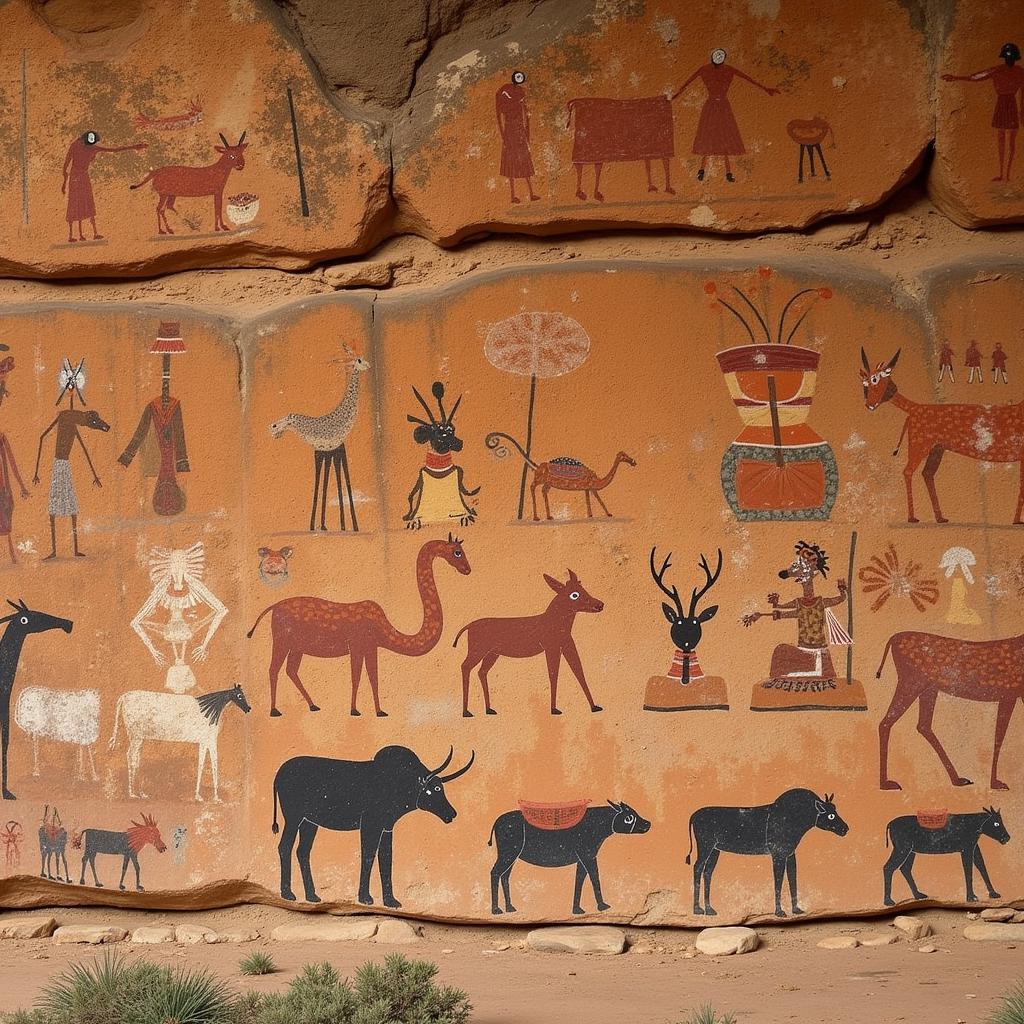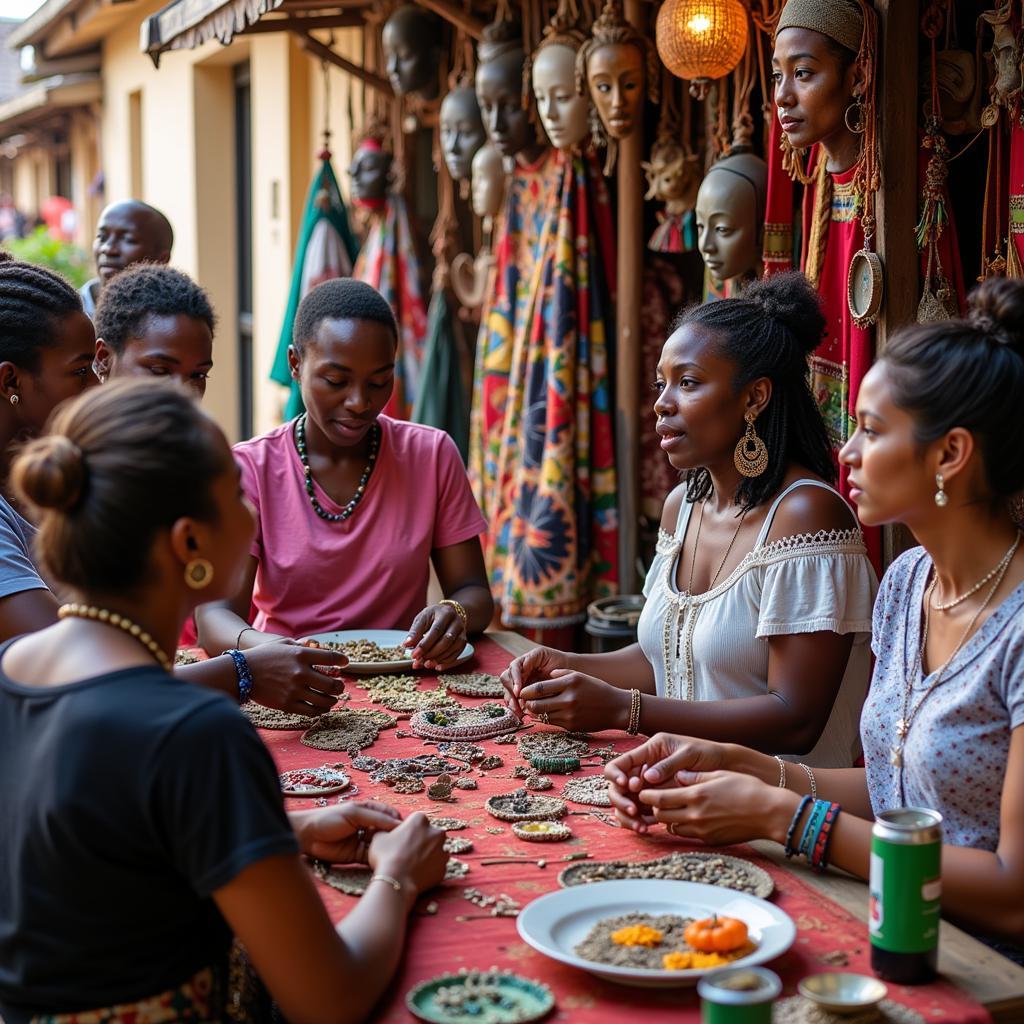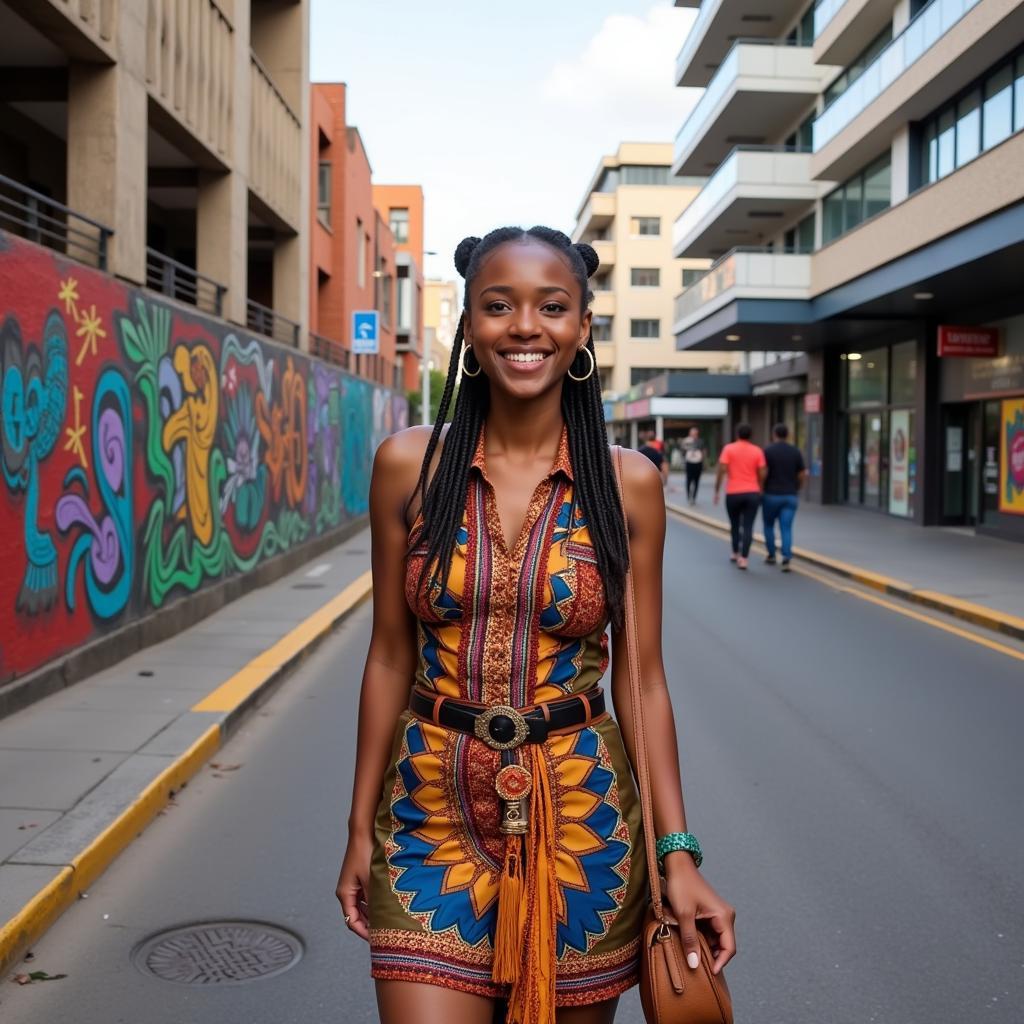Exploring the Rich Tapestry of African Kingdoms Clothes
African Kingdoms Clothes represent more than just garments; they are powerful symbols of status, identity, and cultural heritage. From the intricate patterns of West African kente cloth to the elaborate beadwork of Zulu royalty, the clothing of African kingdoms tells a story of rich traditions, skilled craftsmanship, and complex social structures. Let’s delve into this fascinating world of vibrant colors, luxurious fabrics, and symbolic adornments.
The Significance of Clothing in African Kingdoms
Clothing in African kingdoms served as a powerful visual language, communicating a wealth of information about the wearer. It indicated social status, occupation, and even religious beliefs. Indigenous African clothing traditions often incorporated specific colors, patterns, and materials reserved exclusively for royalty or religious leaders. These garments were not merely decorative; they were imbued with symbolic meaning and played a crucial role in maintaining social order and reinforcing cultural values.
For example, in many West African societies, specific types of cloth, like kente, were exclusively worn by royalty and symbolized their power and authority. The intricate designs and vibrant colors of kente cloth spoke to the wealth and sophistication of the kingdom.
Materials and Techniques: A Testament to Artistry
The creation of African kingdoms clothes involved a remarkable level of artistry and skill. Artisans employed a variety of techniques, including weaving, dyeing, embroidery, and beadwork, to create stunning garments. Natural materials like cotton, silk, raffia, and animal hides were transformed into elaborate robes, headdresses, and jewelry. These techniques were often passed down through generations, ensuring the preservation of traditional knowledge and craftsmanship.
Regional Variations in Royal Attire
Across the diverse landscape of Africa, the clothing of kingdoms varied significantly, reflecting the unique cultural traditions and environmental conditions of each region. From the flowing robes of North African rulers to the feathered headdresses of East African chiefs, each style of dress possessed its own distinct aesthetic.
North African Royalty: Opulence and Elegance
North African royal attire often featured flowing robes made from luxurious fabrics like silk and linen. These garments were often adorned with intricate embroidery and embellished with precious jewels, reflecting the wealth and power of the ruling elite.
West African Kingdoms: Vibrant Colors and Symbolic Patterns
West African kingdoms, such as the Ashanti and Yoruba, were renowned for their vibrant textiles, particularly kente cloth. The complex geometric patterns and rich colors of kente held symbolic meaning and were a mark of prestige and royalty.
Southern African Kingdoms: Beadwork and Animal Hides
In Southern Africa, kingdoms like the Zulu incorporated intricate beadwork and animal hides into their royal attire. The beadwork often conveyed specific messages and served as a form of visual communication. Animal hides, particularly leopard skin, were reserved for royalty and symbolized power and authority.
Dr. Abena Osei, a renowned textile historian specializing in West African cultures, notes, “Kente cloth is more than just fabric; it is a living testament to the rich history and artistic genius of the Ashanti people.”
Professor Jabari Maalim, an expert in East African history and culture, adds, “The intricate beadwork of the Maasai is not merely decorative; it tells stories, conveys social messages, and reflects the deep connection between the Maasai people and their environment.”
African Kingdoms Clothes: A Legacy of Beauty and Significance
African kingdoms clothes represent a rich and diverse tapestry of cultural expression. From the vibrant textiles of West Africa to the elaborate beadwork of Southern Africa, these garments offer a glimpse into the history, artistry, and social structures of ancient African civilizations. African crown graphic designs are also a testament to this rich heritage. By studying and appreciating these unique forms of dress, we can gain a deeper understanding of the rich and complex heritage of the African continent. African kingdoms clothe and African folklore mean more when understood in their historical and cultural context. These garments are not just relics of the past; they are a vital part of Africa’s ongoing story.
FAQ
- What is the significance of Kente cloth? Kente cloth is a vibrant, handwoven textile associated with royalty and prestige in West African cultures, particularly among the Ashanti people of Ghana.
- What materials were commonly used in African kingdoms clothes? Materials varied by region, but commonly included cotton, silk, raffia, animal hides, and beads.
- How did clothing signify status in African kingdoms? Specific colors, patterns, and materials were often reserved for royalty or religious leaders, visually marking their elevated status.
- What are some examples of regional variations in African royal attire? North African royalty often wore flowing robes, while West African kingdoms were known for vibrant textiles like kente. Southern African kingdoms incorporated beadwork and animal hides.
- Where can I learn more about African kingdoms clothes? Museums, cultural centers, and online resources offer further insights into this fascinating topic.
- What role did artisans play in creating royal garments? Skilled artisans employed various techniques like weaving, dyeing, embroidery, and beadwork to create elaborate garments.
- How are African kingdom clothing traditions being preserved today? Through continued practice by artisans, museum collections, and scholarly research, these traditions are being preserved for future generations.
Common Questions about African Kingdoms Clothes
- What were the traditional dyeing methods used? Many kingdoms utilized natural dyes derived from plants, minerals, and insects.
- How has colonialism impacted traditional dress? Colonial influence led to the adoption of some European styles, but many African cultures maintained their unique clothing traditions.
- Are these clothing styles still worn today? While modernized versions are common, traditional attire is often worn for ceremonies, festivals, and other cultural events.
Further Exploration
You might also be interested in learning about African mask traditions or the architecture of ancient African cities.
Need Assistance?
For further inquiries or assistance, please contact us:
Phone: +255768904061
Email: [email protected]
Address: Mbarali DC Mawindi, Kangaga, Tanzania
Our customer service team is available 24/7 to assist you.




